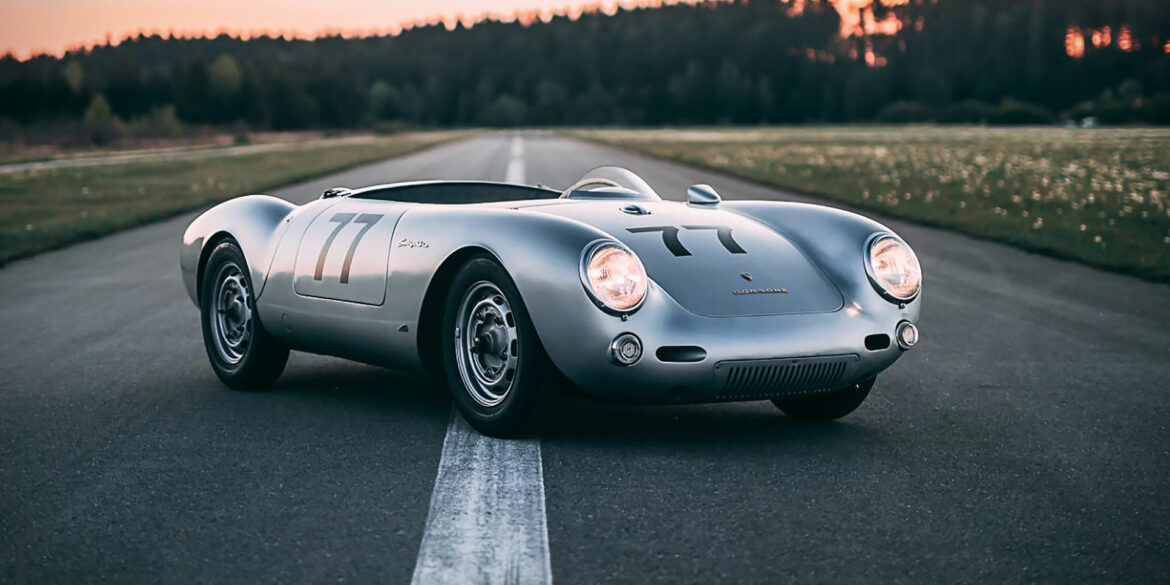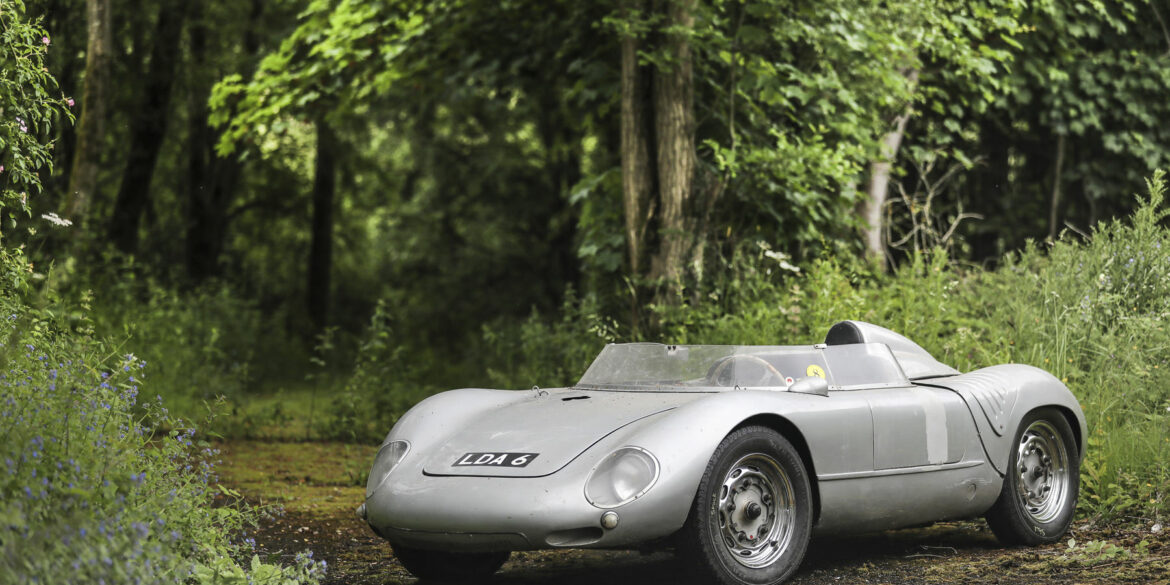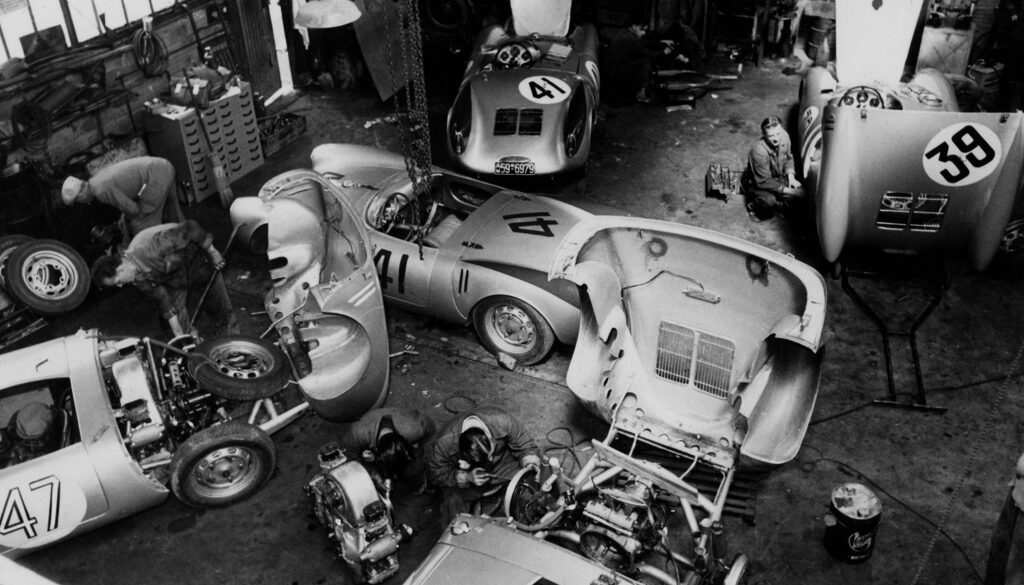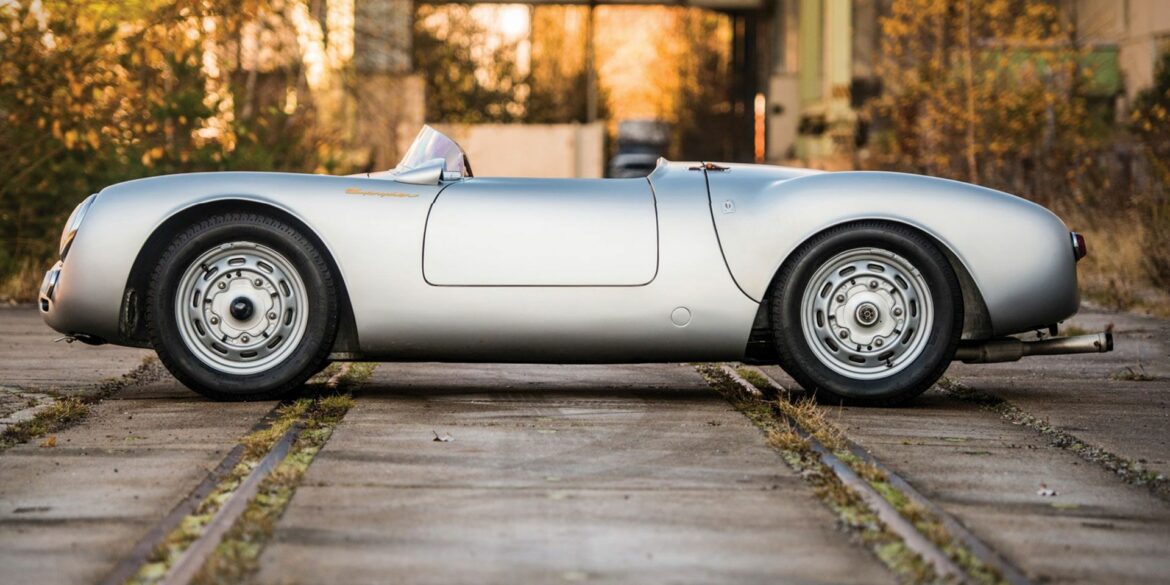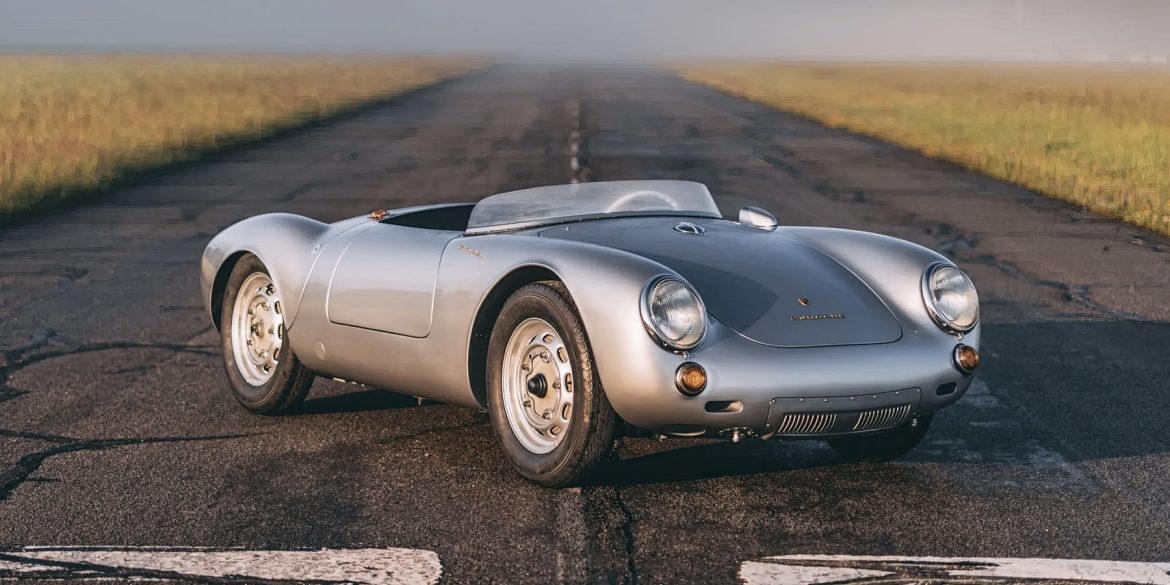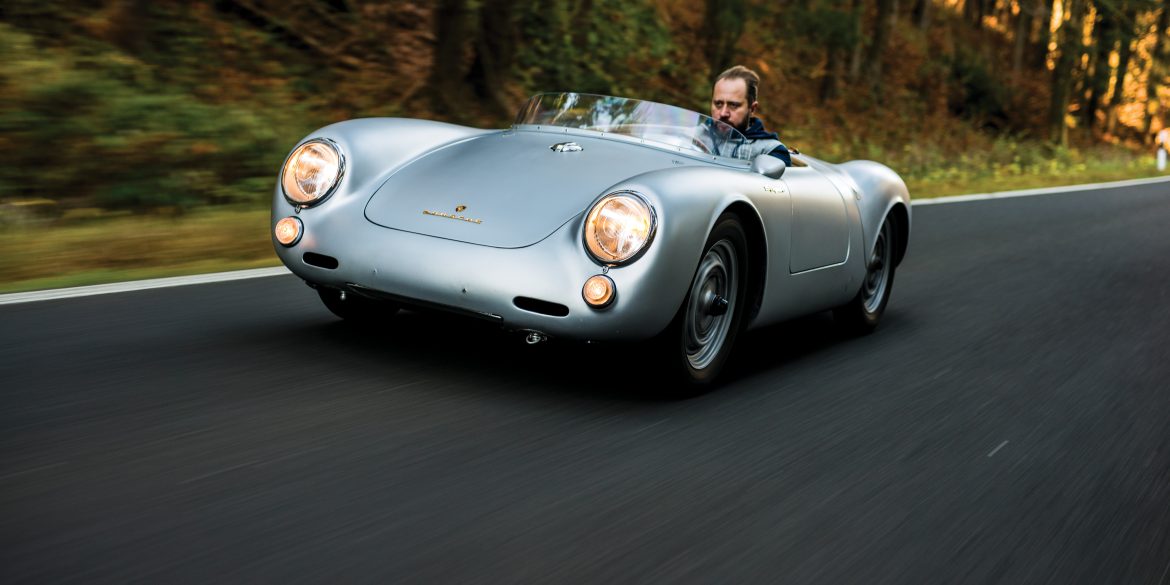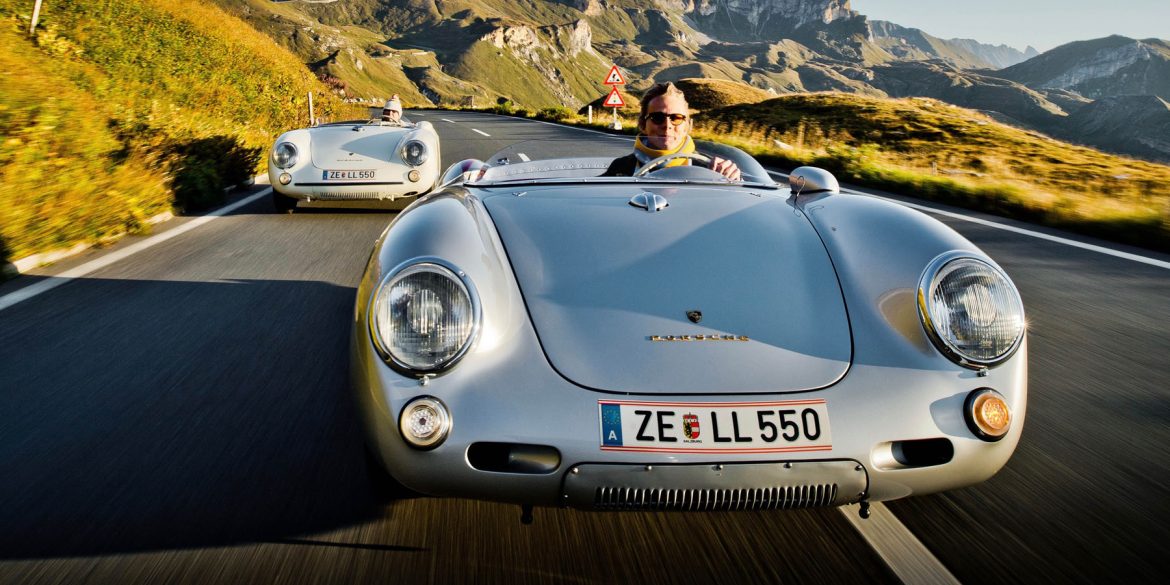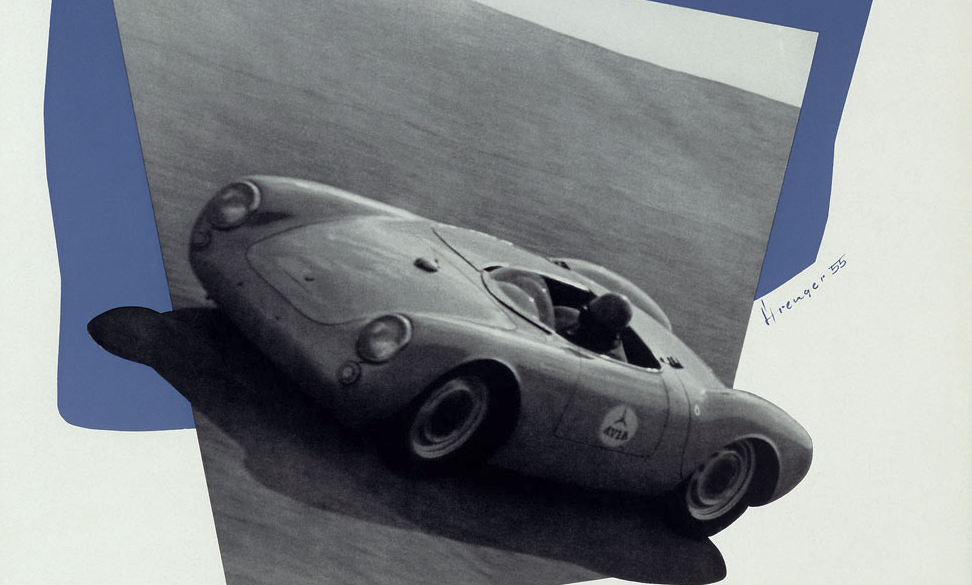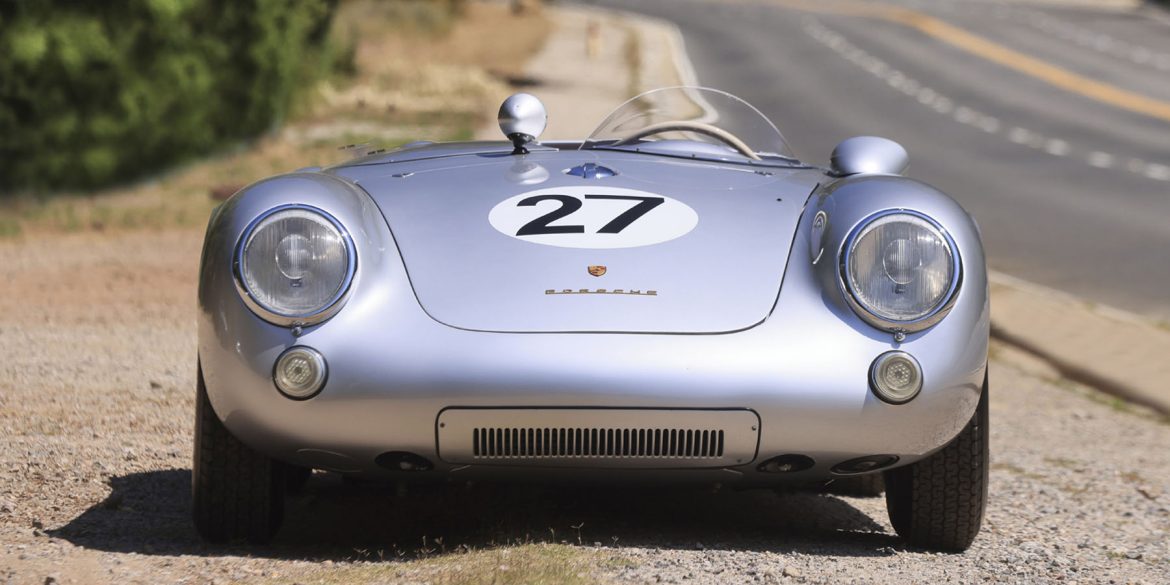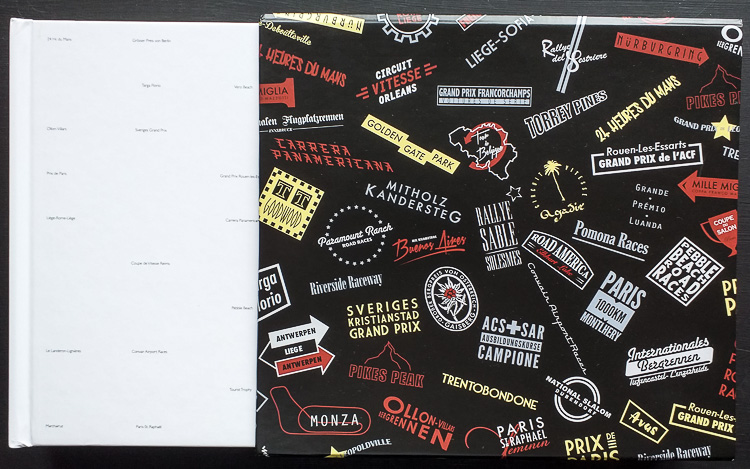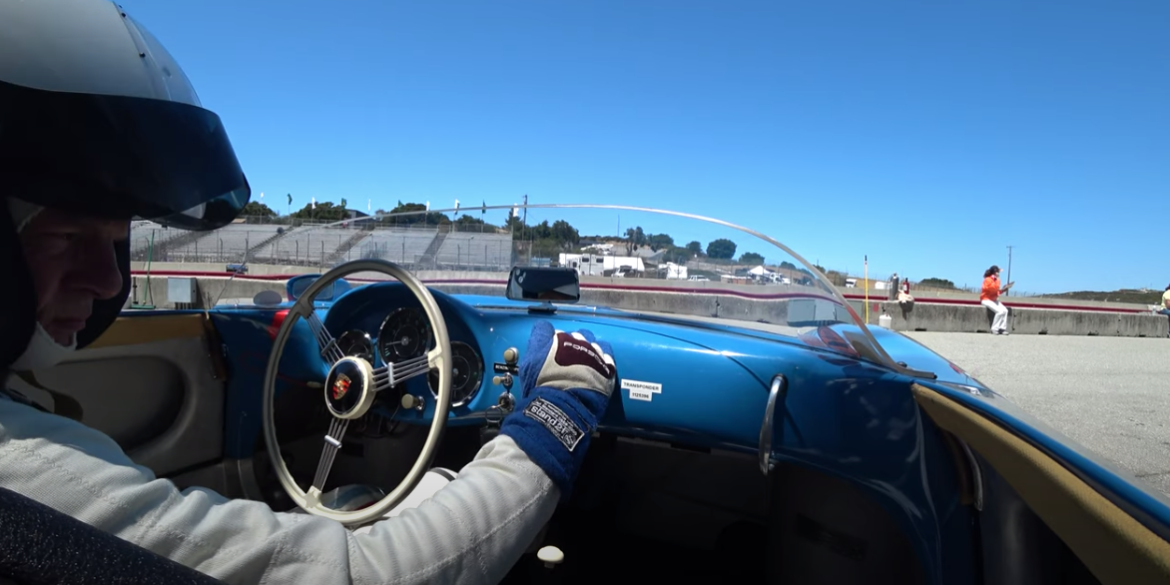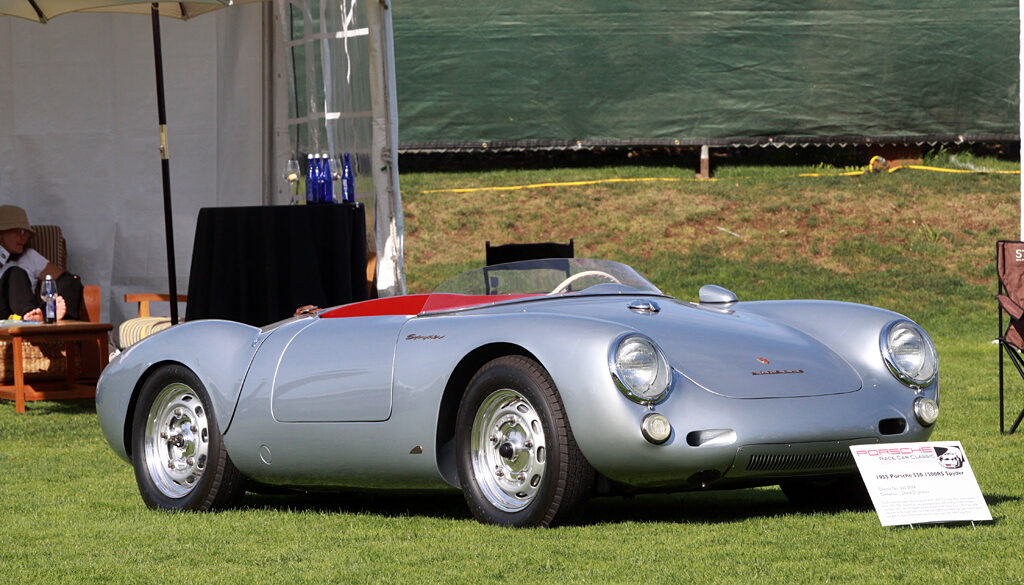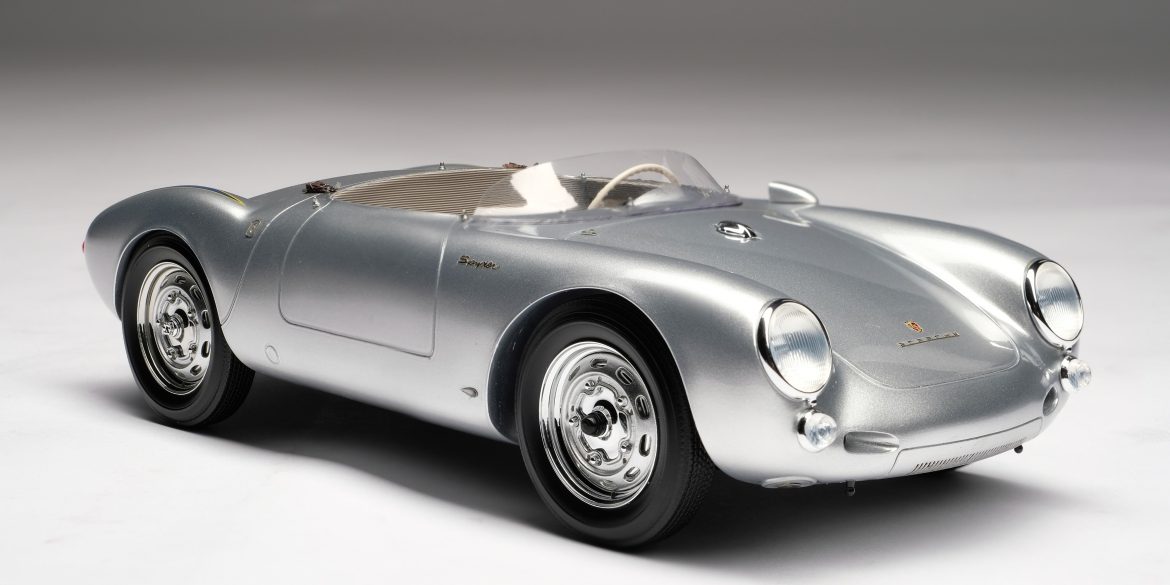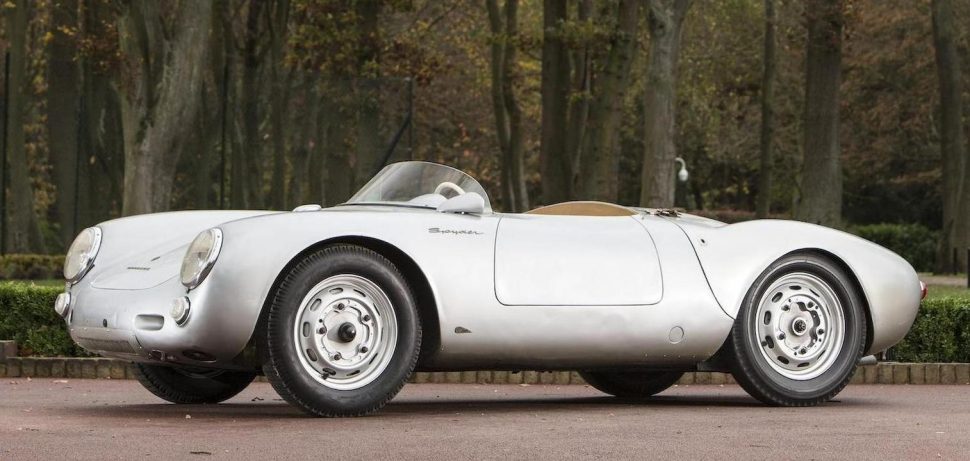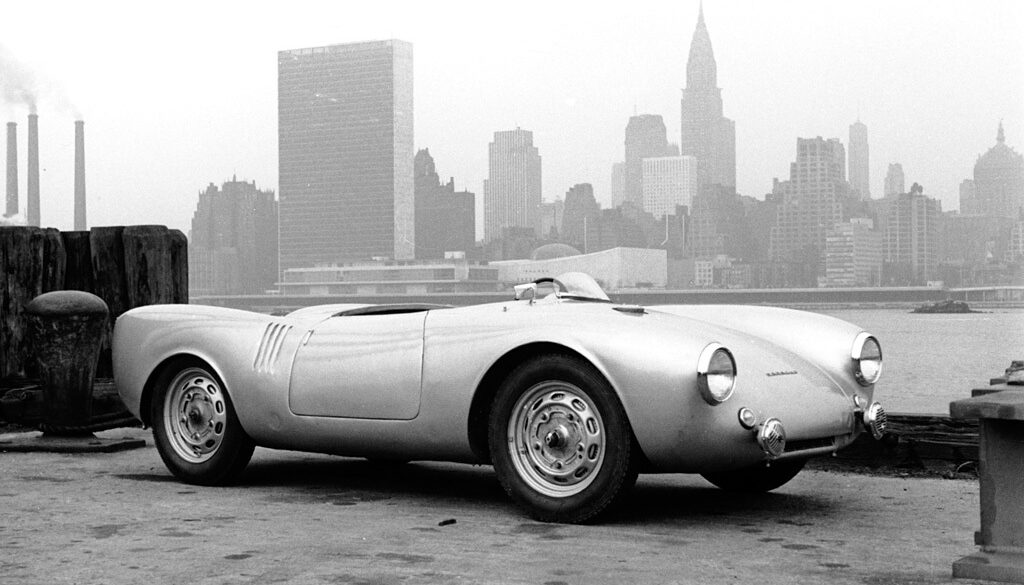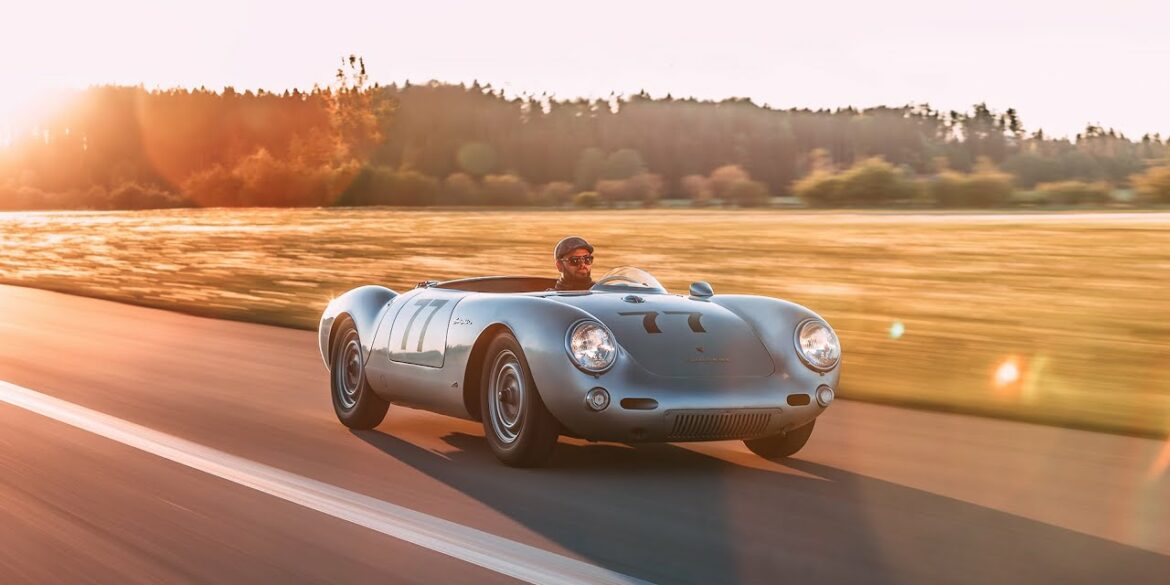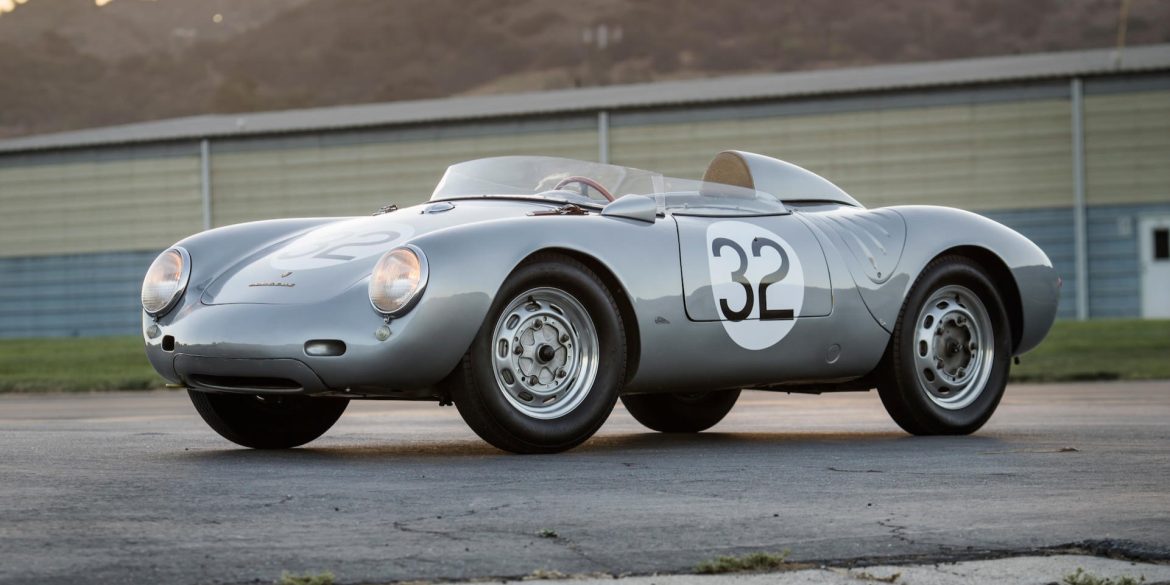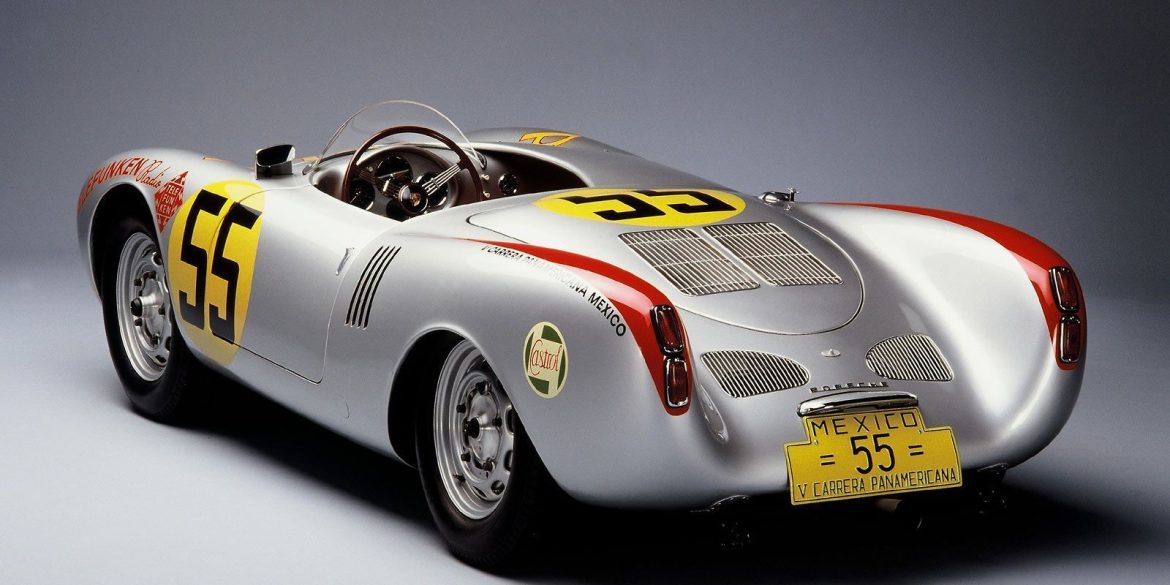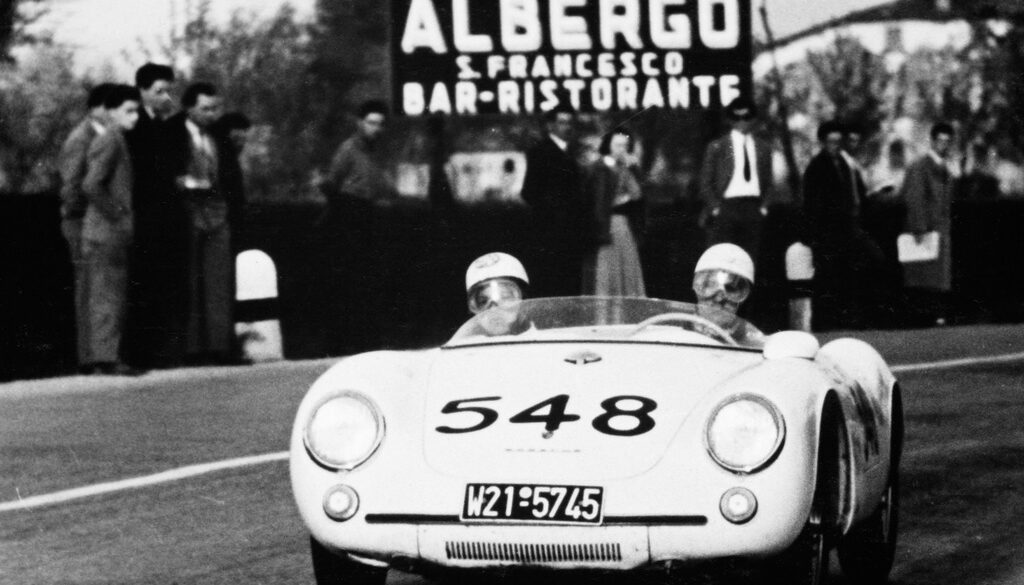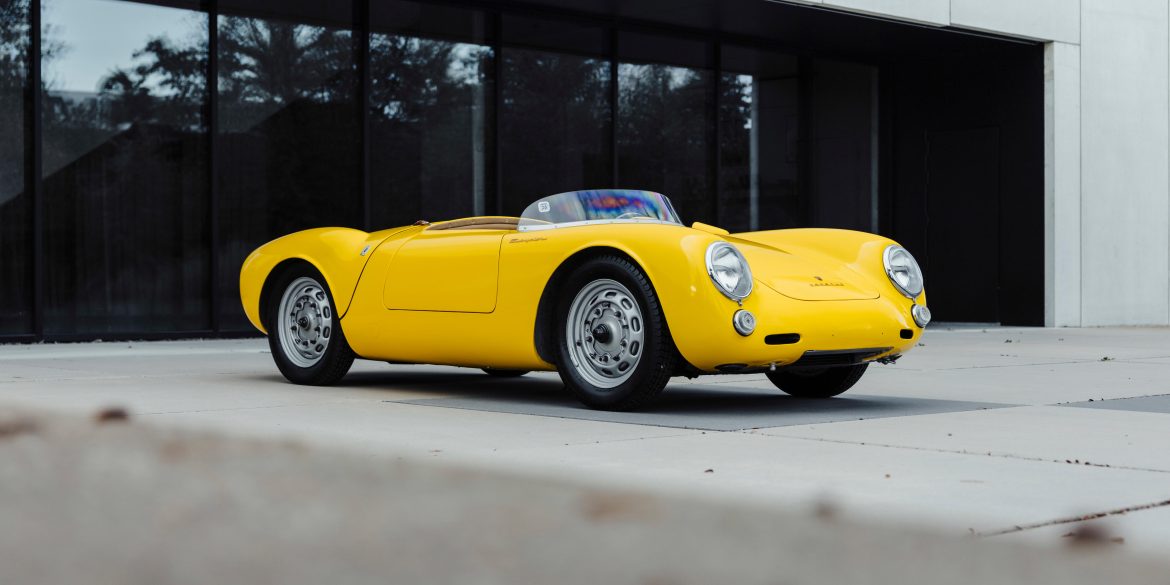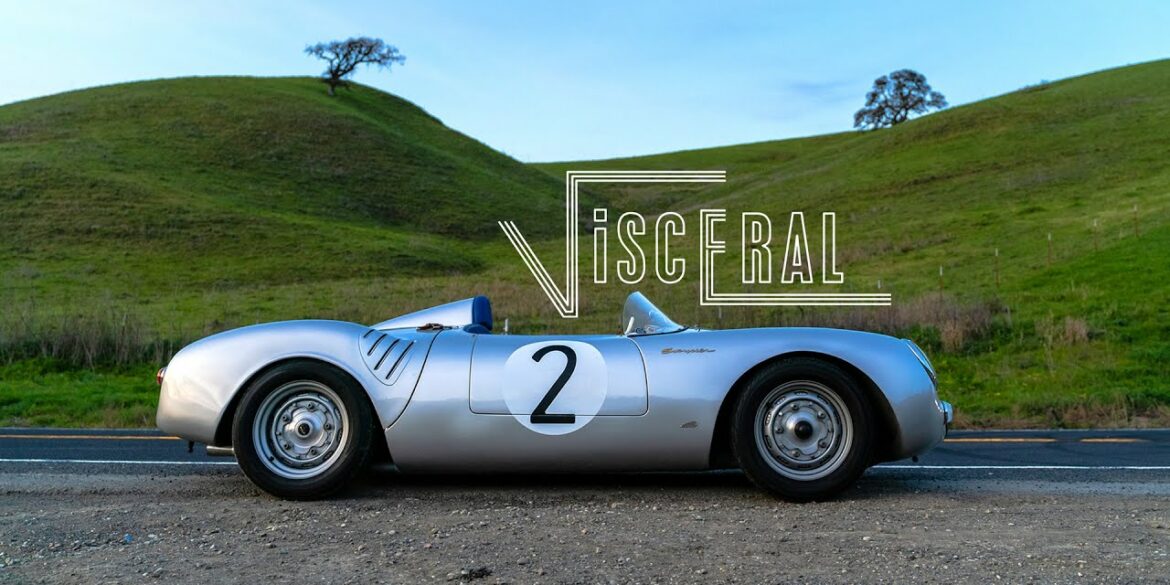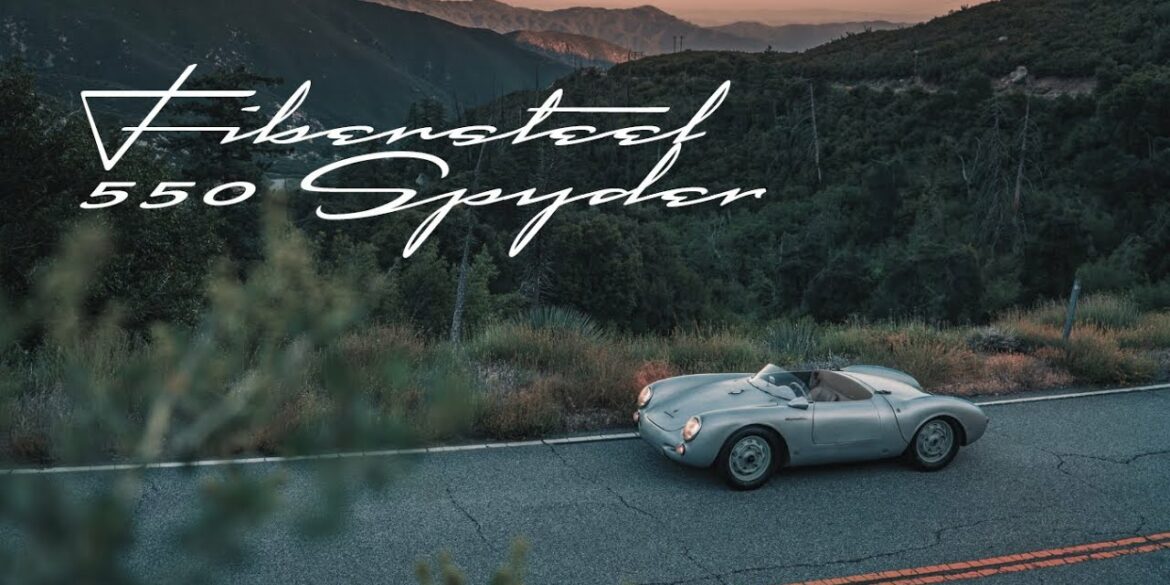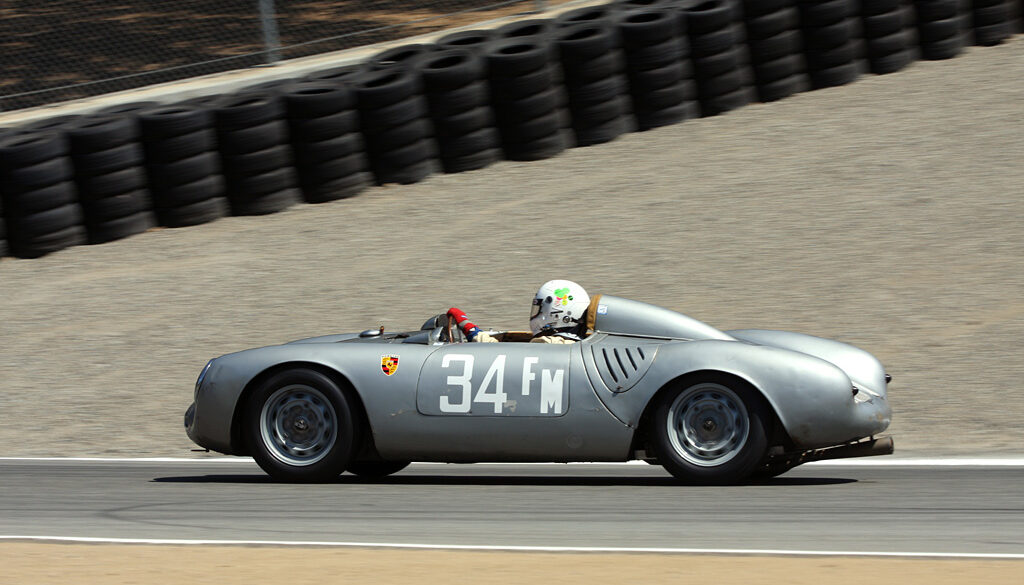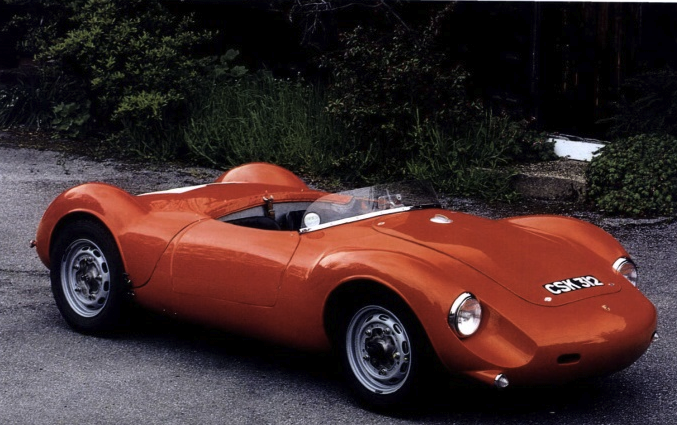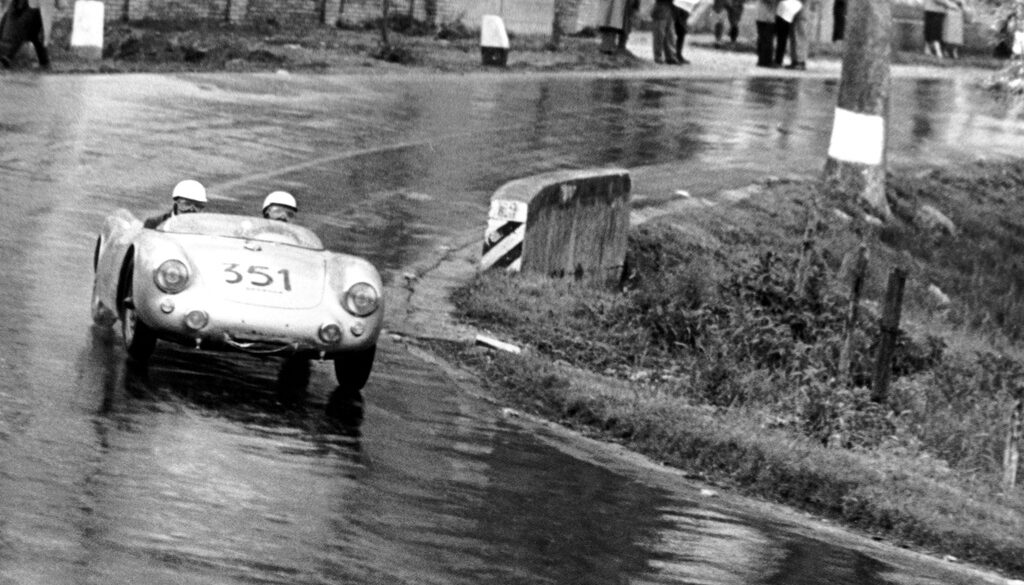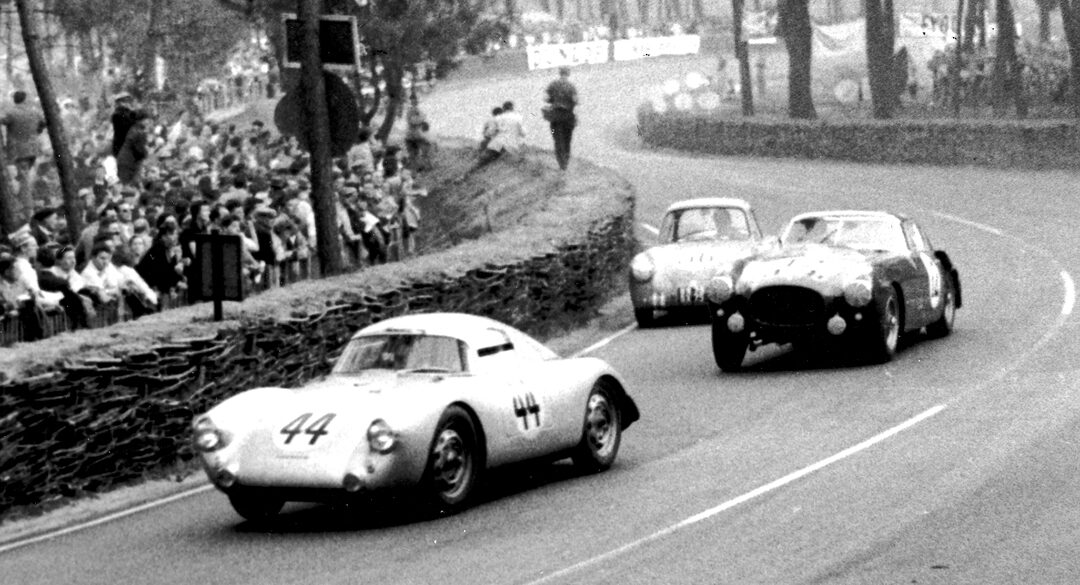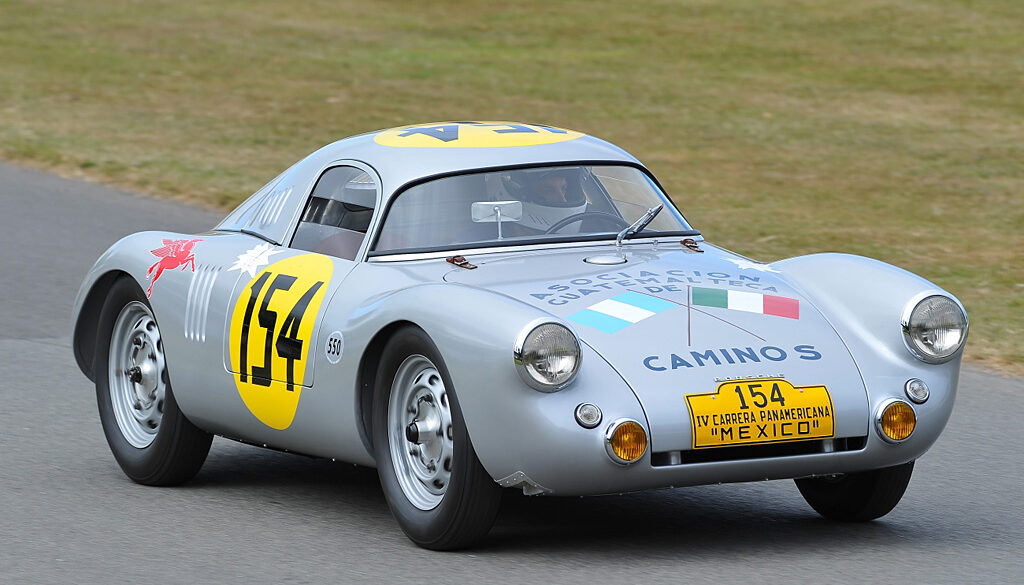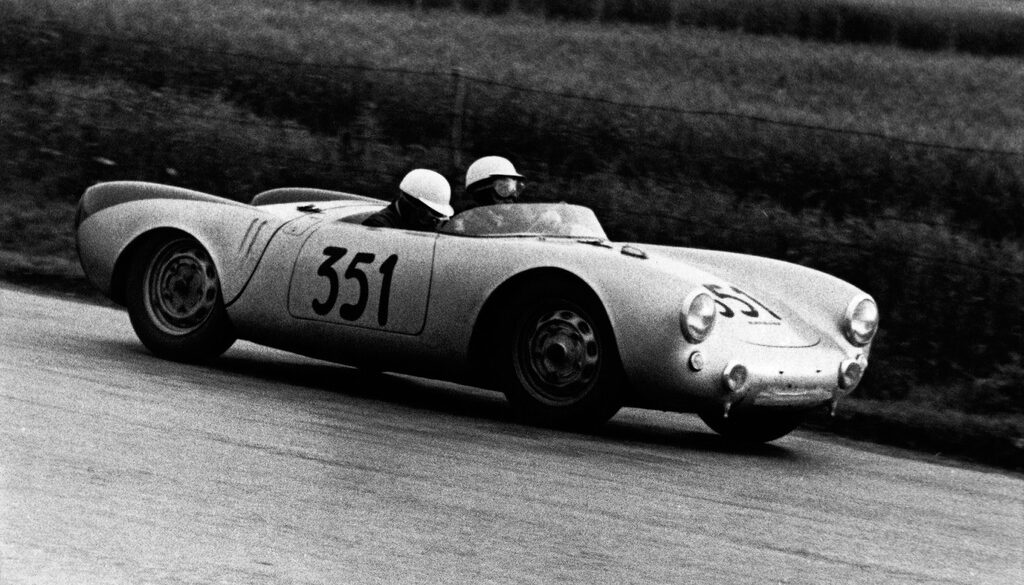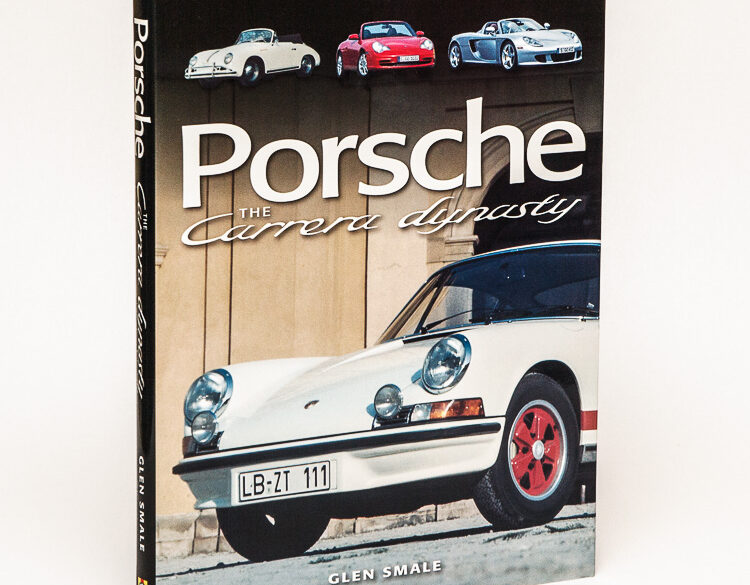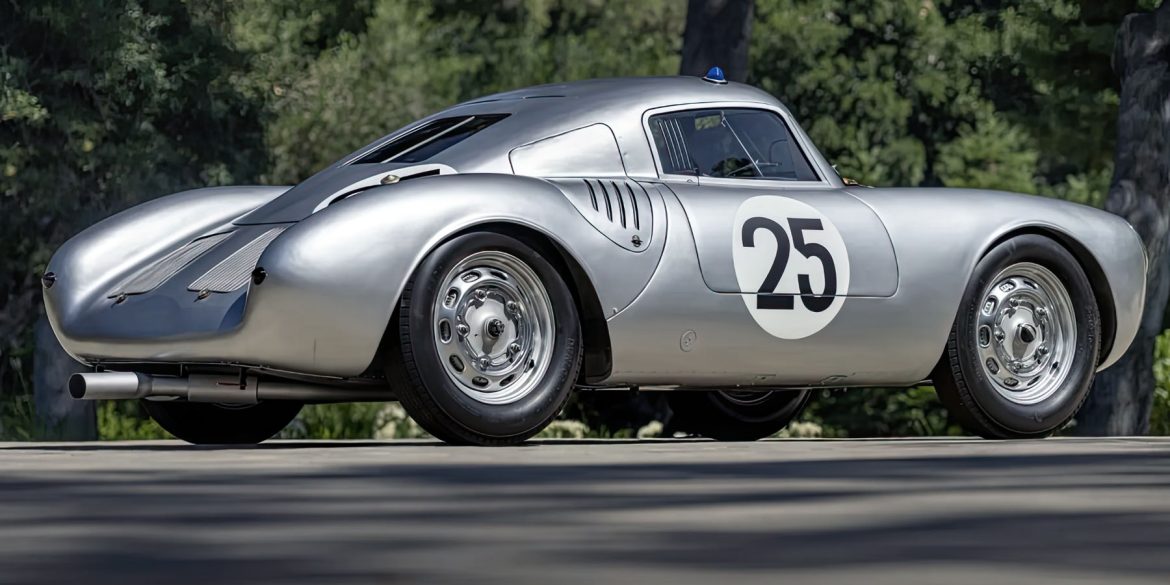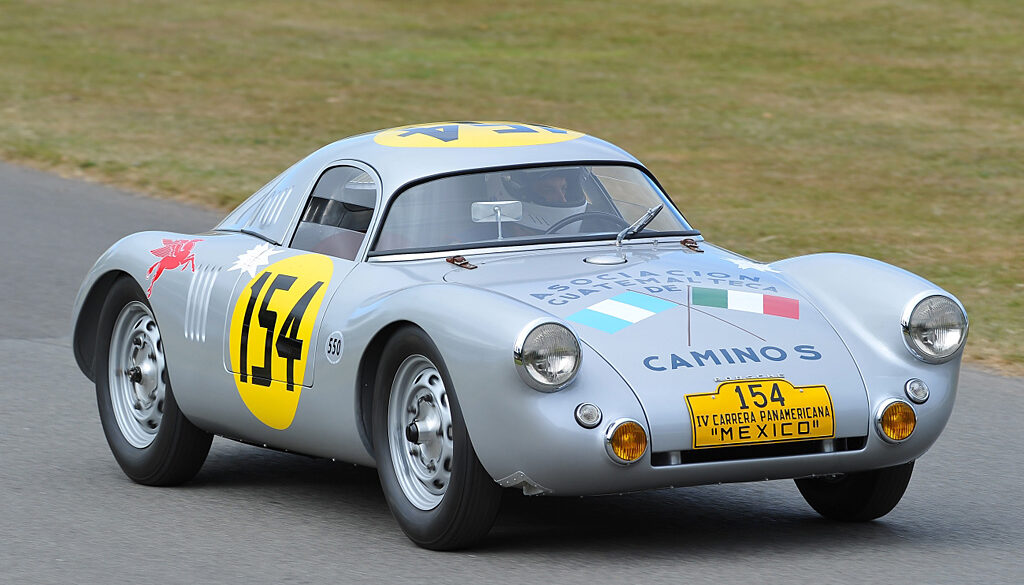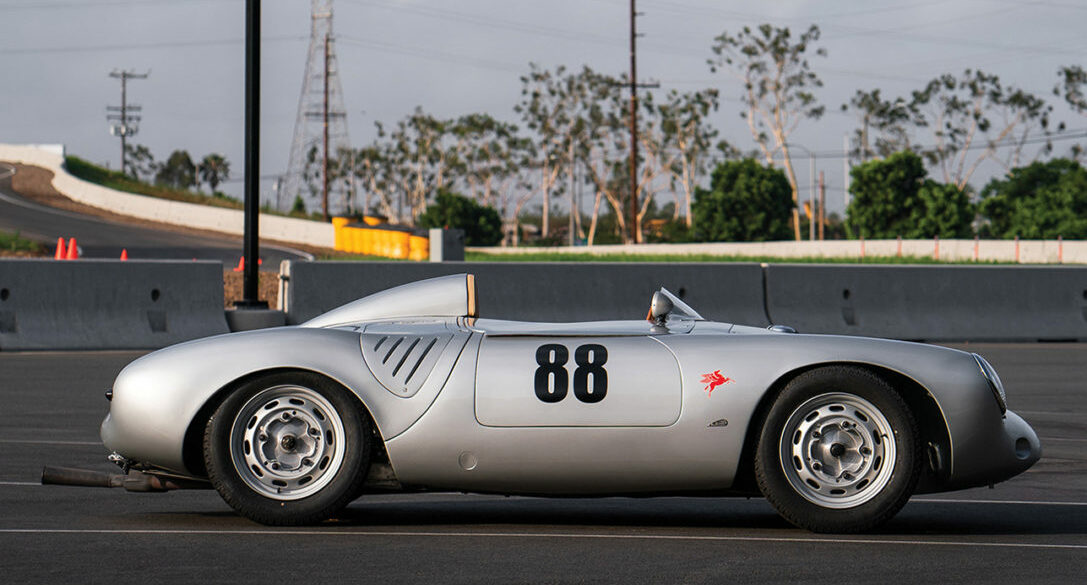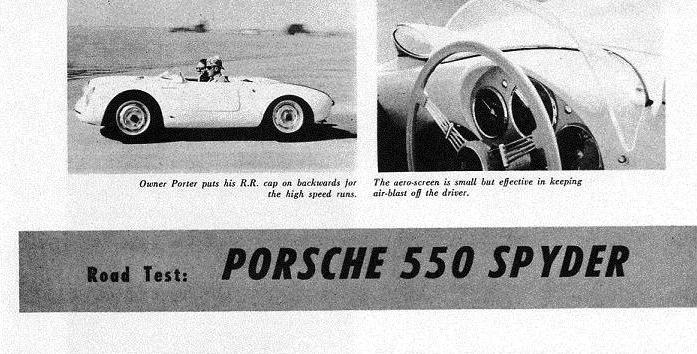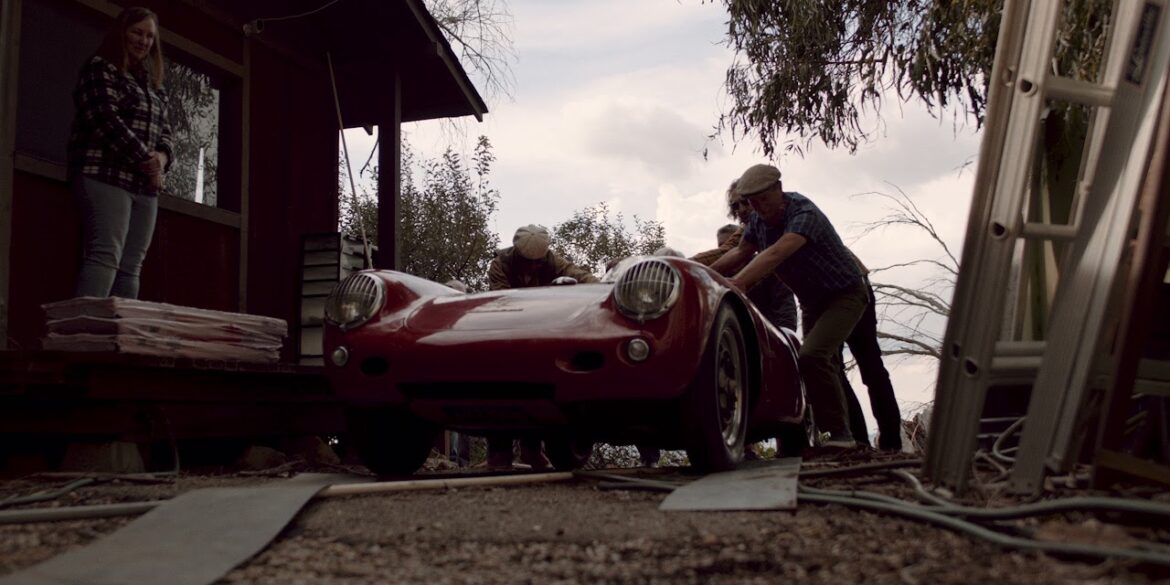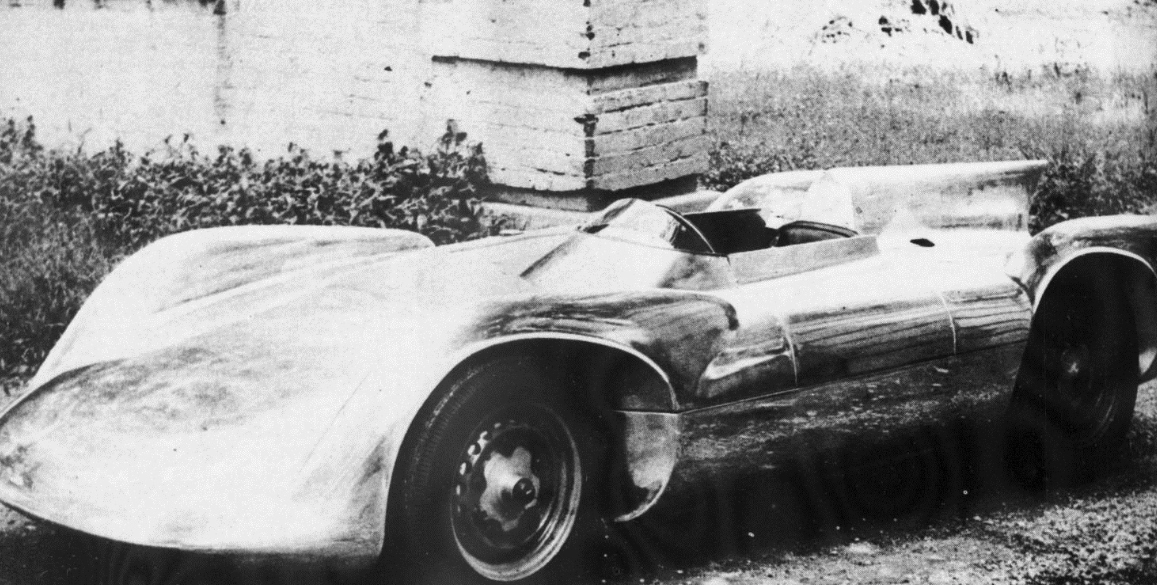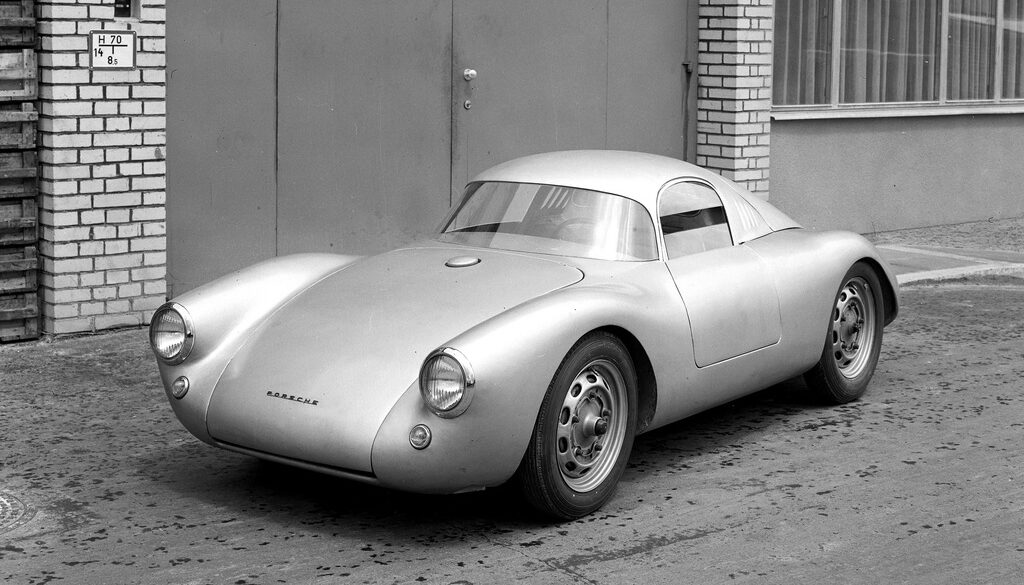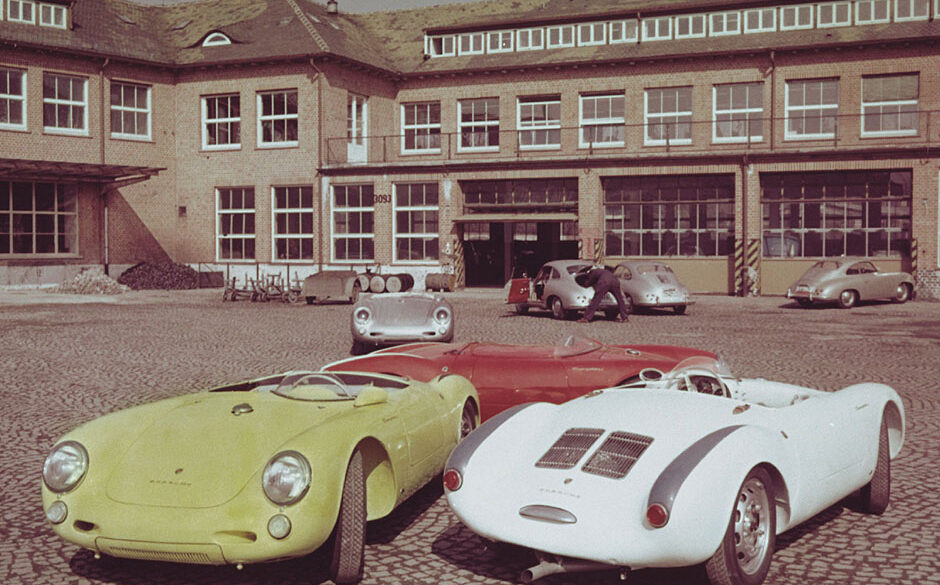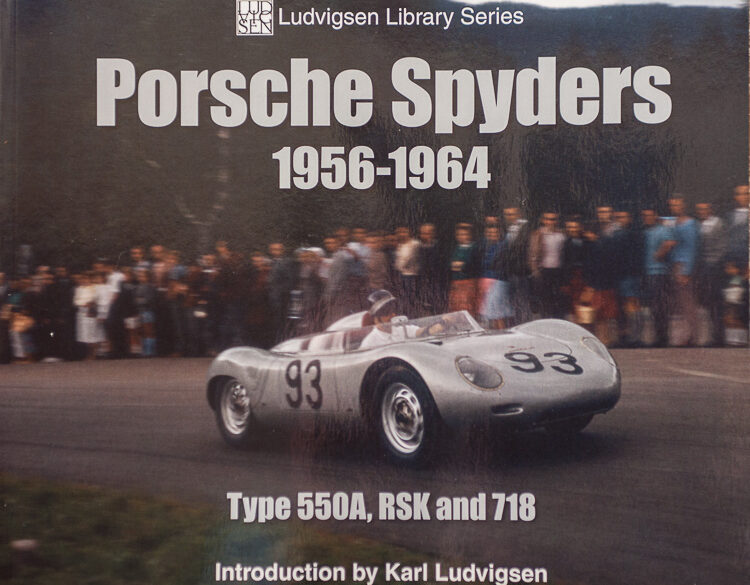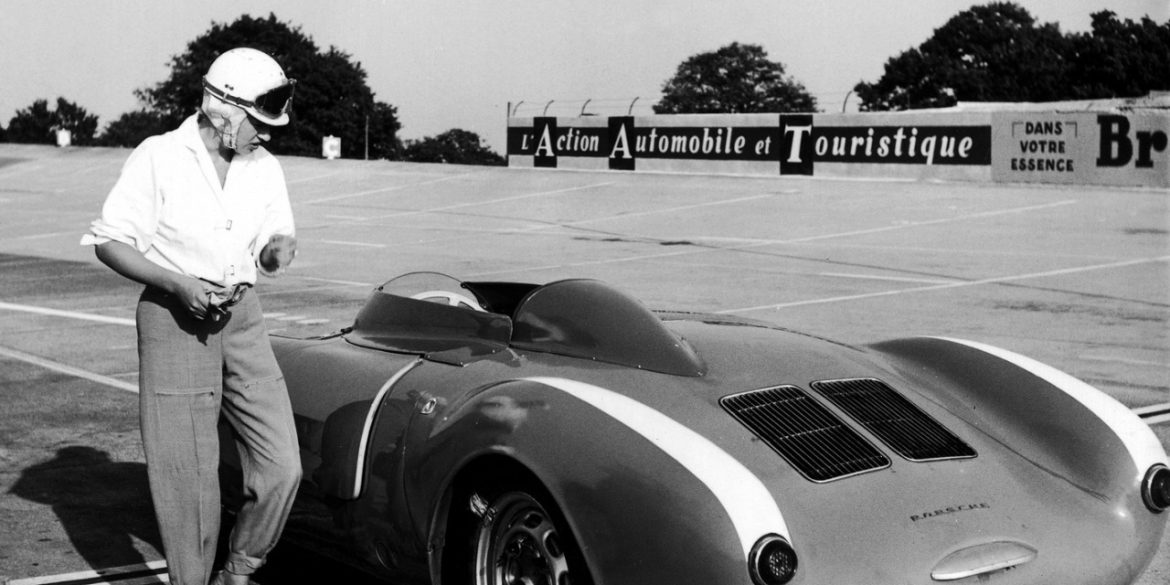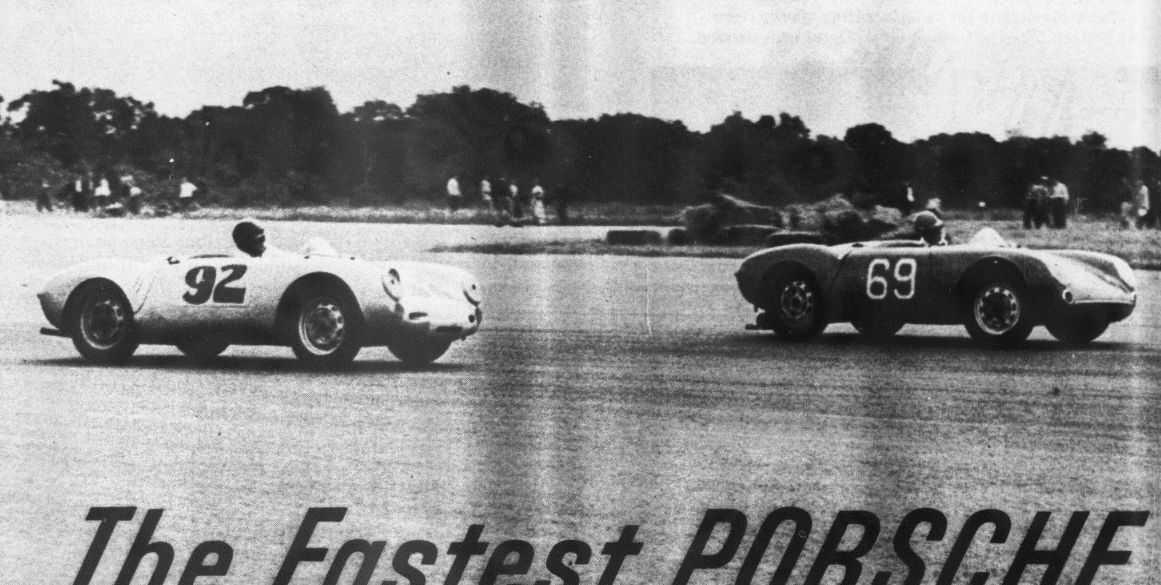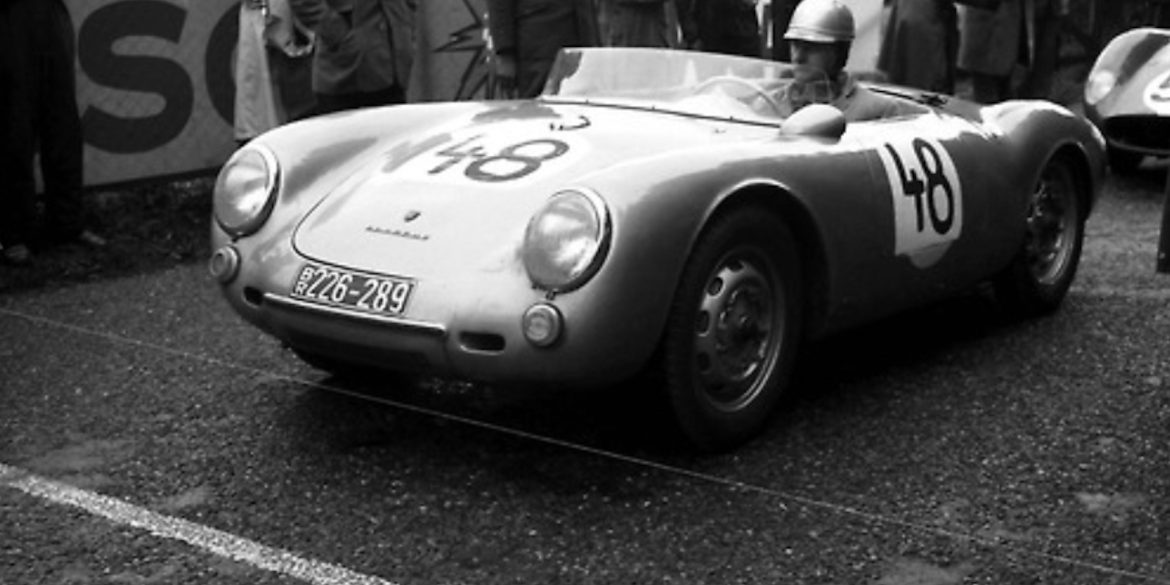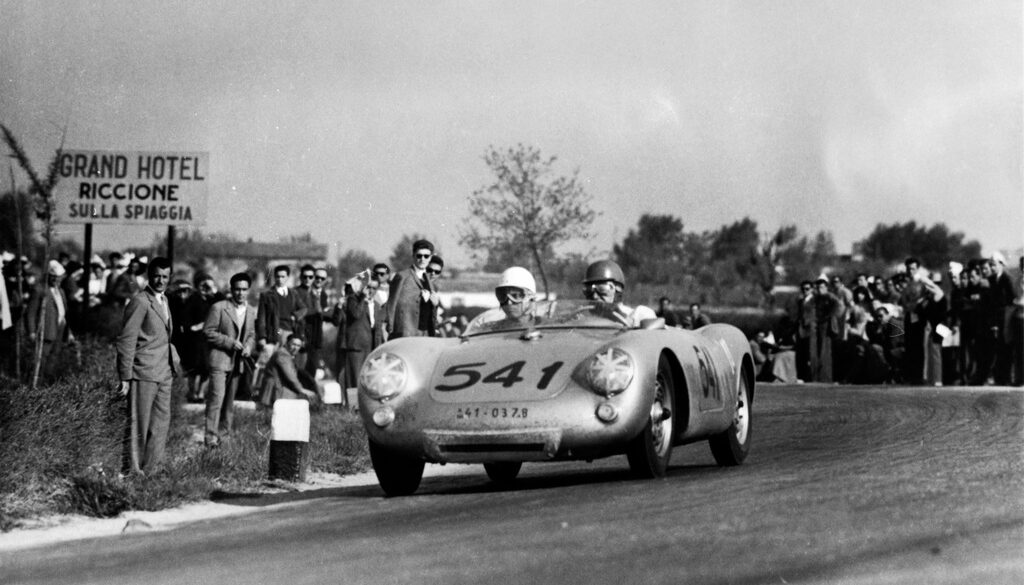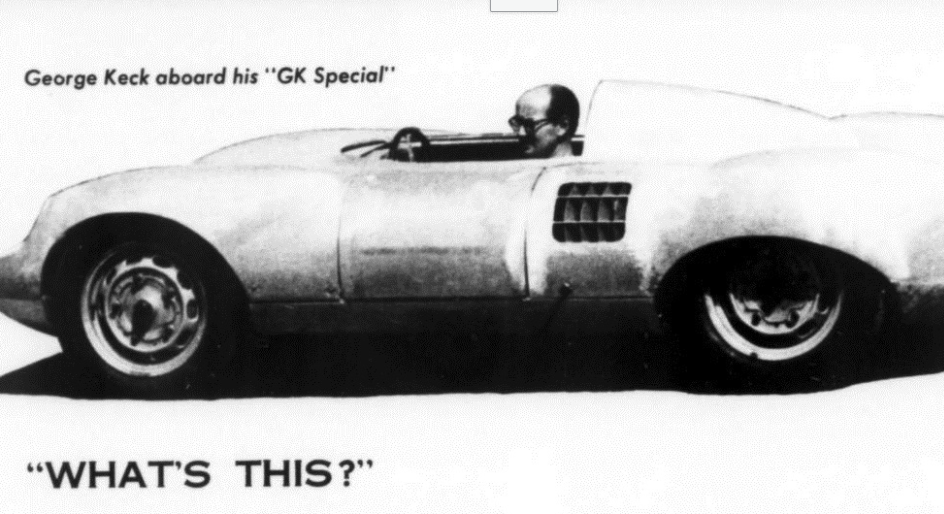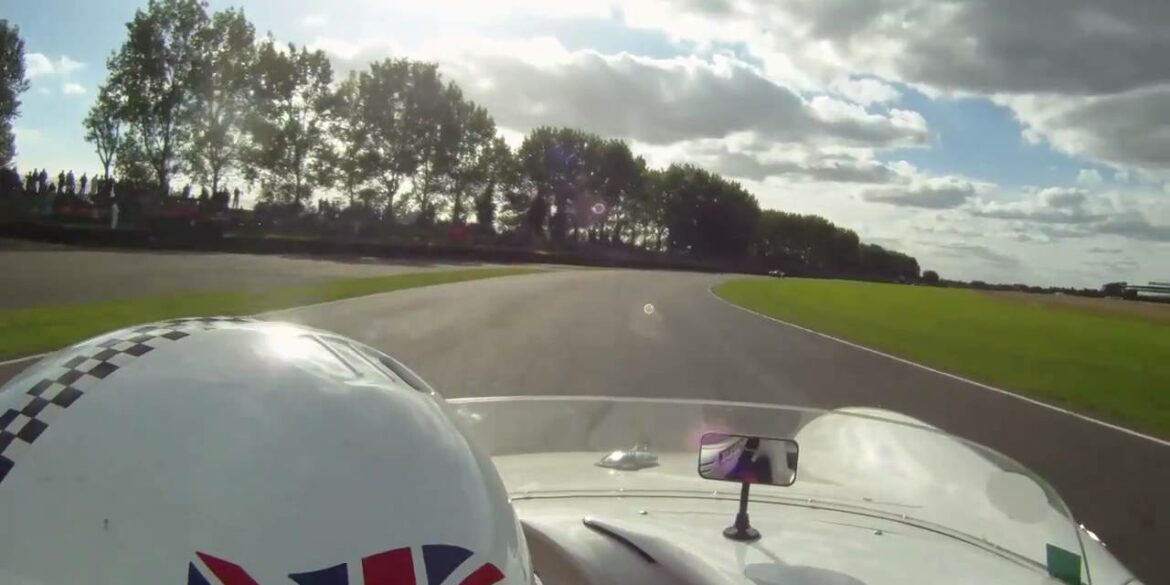Porsche 550 RS Spyder Pictures ...
Barn Find of the Year Expected to Fetch Up to US$2MM The Porsche 550 was Porsche’s first production racing car, completely street legal, it could be driven to the races and back home. It had a flat DOHC engine, meaning it had 4 overhead camshafts like the Porsche type 360...
Porsche 550 Prototype Spyder Specifications In late 1953, Porsche showcased a more definitive version of the 550 with a quad-cam engine and simple roadster body. Designed for a range of races from short course and hill climbs through to long distance endurance races, the engine and longer trailing arm suspension...
The Porsche 550 Spyder was introduced at the 1953 Paris Auto Show. It was simple, small and packed a real punch. It was Porsche's first production racing car. The car was completely street legal, so it could be driven to the races and back home. A really special engine was developed for it, engineered by Ernst Fuhrmann. It was a flat DOHC engine, meaning it had 4 overhead camshafts like the Porsche type 360 design for Formula 1.
Without question, the Porsche 550 Spyder is recognized as the first Porsche that was purpose-built for racing. This compact, mid-engine sports car significantly impacted events such as the Targa Florio, Mille Miglia, 24 Hours of Le Mans, and Carrera Panamericana, often outperforming larger and more powerful rivals from Ferrari and...
As their first dedicated sports racing car, the 550 RS Spyder was raced to Porsche’s first major victory at the grueling 1956 Targa Florio. This early success marked the arrival of Porsche’s dedicated race car program, one which went on to win more races than any other manufacturer and largely...
Four originals: Dr. Wolfgang Porsche, his son Ferdinand, and two Porsche 550 Spyders on the Großglockner High Alpine Road – a mountain that figures prominently in Porsche family lore. What a panorama: At an altitude of 2,571 meters, the Edelweißspitze offers a magnificent view of the Großglockner, Austria’s highest peak....
No Subscription? You’re missing out Get immediate ad-free access to all our premium content. Get Started Already a Member? Sign in to your account here....
By 1953, Porsche had been successful racing its 356, but understood that a purpose-built race car would be needed to compete at motor sport’s highest levels. The resulting 550 Spyder, featuring lightweight aluminum bodywork and a powerful four-cam Carrera engine, was one of the most successful race cars of the...
SportErfolge: by Tony Adriaensens – page photographs by © Virtual Motorpix/Glen Smale Simply titled, SportErfolge (English: Success in Sport), this book came my way quite by surprise. It is not a book I knew anything about until I spotted it on the internet, and decided to look for a copy....
A session at Laguna Seca in a Porsche 550 Spyder...
Porsche 550 RS Spyder Pictures...
Porsche 550 Spyder Chassis Numbers & Stories Chassis #550-0016 to #550-0090 One year before Porsche started production of the legendary RS Spyder, they experimented several unique 550 Prototypes. Two of these were fitted with removable hardtops (Chassis #550-01 and #550-02) that transformed the diminutive roadster into a sleek coupe. These were quite...
Porsche 550 Spyder: A Life Dedicated Nürburgring Nordschleife in a Porsche 550 Spyder....
Porsche 550 Spyder Production Porsche assigned build numbers to each of the 550/1500RS cars built (RS short of rennsport which translates to ‘racing’ in English), with the prototype starting with 2-digit chassis numbers, 550-01 through to 550-15. The first ‘production’ 550 was assigned a 4-digit chassis number, 550-0016 with the last ‘documented’ spyder...
Porsche – The Golden Years: Leonardo Acerbi © Virtual Motorpix/Glen Smale It is always a pleasure when a top-quality book lands on my desk, so when Porsche – The Golden Years arrived at the Porsche Road & Race offices, I was especially pleased. We had the pleasure of reviewing Ferrari...
In 1953 Porsche created a series of 550 prototypes and 550-03 became the most important car in Porsche history by winning the 1954 Carrera Panamerica with Hans Herrmann at the wheel. This singular victory lent the Carrera nameplate to future models and also marked the first international victory of a mid-engine car. Only 15 prototypes were made until regular production began in 1954 of the Porsche RS Spyder.
Porsche 550 Spyder Replica: Visceral Christophe Schmidt, co-founder of A & S, and Anders Warming, Automotive designer, discuss the 1955 Porsche 550 Spyder, chassis 550-0050....
A rare and iconic ex-Le Mans Porsche 550A Spyder will come under the hammer at Bonhams’ Scottsdale sale on 19 January 2018 in Phoenix, Arizona. Chassis #550A-0145 is the second-to-last 550A built and is a veteran of four world championship races while being campaigned as a works entry by Porsche...
The Porsche 550 was Porsche’s first production racing car. The car was completely street legal, so it could be driven to the races and back home. The 1956 version of the Porsche 550 was known as the 550A. It had a lighter and more rigid spaceframe chassis, and gave Porsche...
February 1, 1954, the city of New York. The Porsche-550, chassis 04 returned from the Gulf of Mexico after participating in the Carrera Panamericana rally, which took place from November 19 to 23, 1953 through Mexico. Near the car are left-right: Herbert Linge, Karl Kling, Werner Engel, Hans Herrmann No...
No Subscription? You’re missing out Get immediate ad-free access to all our premium content. Get Started Already a Member? Sign in to your account here....
The Porsche 550 was the brand’s first production racing car, designed to be both street legal and track-ready, allowing drivers to race and then drive it home. A unique engine, developed by Ernst Fuhrmann, powered the 550. This flat DOHC engine had four overhead camshafts, similar to the Porsche Type...
Porsche 550 Spyder Replica: Visceral Eric Rothenhaus comes from a family that viewed cars differently than he did. Whereas a six-year-old Eric bought into the idea that cars are living things from watching the adventures of a certain Volkswagen in The Love Bug, his parents simply used their cars to...
Porsche 550 Spyder: A Life Dedicated Fibersteel has been developing and manufacturing aftermarket parts for original and reproduction Porsche 550 Spyders, 356 Coupes, and Speedsters for over 20 years based out of their small shop in Southern California. Russ first got his start in fabrication before he could drive and...
Porsche 550A RS Spyder Pictures...
No Subscription? You’re missing out Get immediate ad-free access to all our premium content. Get Started Already a Member? Sign in to your account here....
Porsche 550 RS Spyder Specifications Starting with Chassis 550-03 (the third Porsche 550 prototype), Porsche gave the 550 the latest Ernst Fuhrmann’s designed type 547 quad cam engine installed – 547-01, with duel overhead cams, duel distributors, twin plug ignition and a complicated, multi-section Hirth roller bearing crank. No Subscription?...
Porsche’s Spyders stole the limelight, but in the 1950s they had serious rivals in both BMW and EMW, who produced serious 1½-liter machinery. Their battles on both sides of the Iron Curtain were the stuff of legend. A liter and a half—more or less a quart and a half—isn’t much...
Porsche 550 Prototype Coupé Pictures Porsche produced only two 550 coupes, the 550-01 and 550-02. The body of the car was completed in October 1952 with the whole car assembled and ready for testing in June 1953. It was finished in German racing silver with red interior. Taking cues from...
Porsche 550 Prototype Spyder Pictures Porsche 550 Prototype Spyder Pictures ...
Porsche: The Carrera Dynasty by Glen Smale © Glen Smale A Spanish noun, ‘carrera’ can mean road, track or race and since the 1970s ‘Carrera’ has been a model name synonymous with Porsche. In fact, and as the author explains, Porsche had been using the name ‘Carrera’ since 1954 to...
No Subscription? You’re missing out Get immediate ad-free access to all our premium content. Get Started Already a Member? Sign in to your account here....
Since 1951, Porsche has established an unrivaled dominance as overall champions at the 24 Hours of Le Mans (19 wins), 12 Hours of Sebring (18 wins), 24 Hours of Daytona (18 wins), and Targa Florio (11 wins)—to say nothing of the 100-plus class victories which Porsche entries have secured in...
Porsche 550 Prototype Coupe Specifications The first two Porsche 550s were coupes and had slightly different specifications than the 550 Spyders that came afterwards. No Subscription? You’re missing out Get immediate ad-free access to all our premium content. Get Started Already a Member? Sign in to your account here....
Based on the 718 Cayman GT4 RS, two exceptional cars have been made in collaboration with Porsche Latin America. The car with racing number 154 is celebrating its premiere this weekend at Rennsport Reunion 7, the big fan meet-up at the Weathertech Raceway Laguna Seca in California. 70 years ago,...
Porsche 550A RS Spyder Pictures Appearing at the end of 1956, the 550A differed from its predecessor by use of a full tube spaceframe with several rear supportive cross-members, rather than the heavier welded-up sheet steel internal structure of the 550. Construction of the curvaceous and sleek hand-beaten aluminum alloy...
Family Porsche 550 Spyder locked away in shipping container ...
One year before Porsche started production of the legendary RS Spyder, they experimented several unique 550 Prototypes. Two of these were fitted with removable hardtops that transformed the diminutive roadster into a sleek coupe. These were quite successful on faster circuits, but the roadster was later preferred as a more saleable car. The Coupes were retained by the factory to contest the Carrera Panamericana race.
Porsche 550 (1953-1956) Introduction Porsche needed a race car to compete in the roadster class, and that’s just what the 550 Spyder did at a time when production cars could no longer win. In fact, the third 550 prototype and first 550 to race won its first event at the...
© Porsche Spyders 1956-1964: Type 550A, RSK and 718 With just 125 pages in total, this book is not a detailed narrative description of the Porsche Spyders between 1956-1964. But what it is, is a useful record of the Type 550A, RSK and 718 models, richly supported with period photography....
On August 18, Annie Bousquet, during the arrival of the record in one hour, lost control and got into an accident. She was injured and was sent to the hospital, where she received a long-term treatment. Chassis 07 was badly damaged. No Subscription? You’re missing out Get immediate ad-free access...
A 1955 Porsche 550 Spyder was the definite star of the recently concluded Bonhams Amelia Island Auction after achieving a final sale price of $4,185,000. It was definitely the queen of the event after which had a total sale of $13.5 million and an impressive 95% sell-through rate. A lot...
No Subscription? You’re missing out Get immediate ad-free access to all our premium content. Get Started Already a Member? Sign in to your account here....
The 550A was based on Porsche’s first purpose-built racing car, the mid-engined RS 550 Spyder. Appearing at the end of 1956, the 550A differed from its predecessor by use of a full tube spaceframe with several rear supportive cross-members, rather than the heavier welded-up sheet steel internal structure of the 550. The rear swing axles of the 550 were replaced by a new low-pivot arrangement that made handling much more predictable.
No Subscription? You’re missing out Get immediate ad-free access to all our premium content. Get Started Already a Member? Sign in to your account here....
Racing the Porsche 550 Spyder at Goodwood Andy Prill gives us a taste of what it’s like to race around Goodwood’s historic circuit in the Porsche 550 Spyder...


